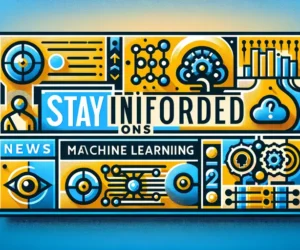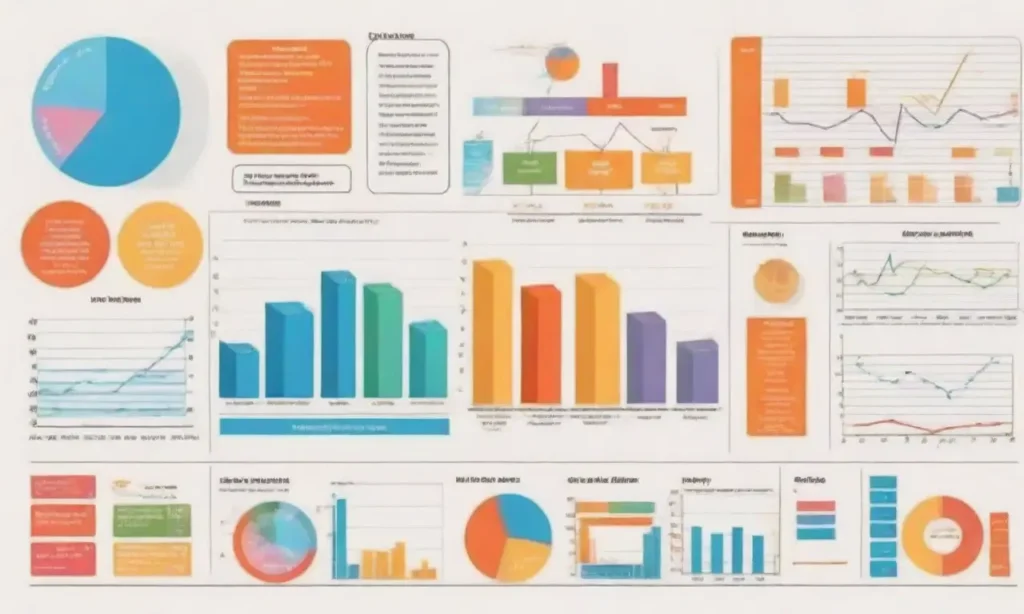
Comparative Analysis of Image Recognition Frameworks and Libraries

Introduction
In today's technologically advanced landscape, image recognition has become an integral part of numerous applications ranging from social media tagging to autonomous vehicle navigation. The capability of machines to interpret and understand visual data holds immense potential across multiple sectors including healthcare, retail, and security. In recent years, the rise of deep learning has further propounded the significance of robust image recognition systems, thus making the choice of framework or library pivotal for developers and researchers.
This article aims to provide an in-depth comparative analysis of popular image recognition frameworks and libraries available in 2023. By examining their features, performance metrics, usability, and community support, this article will assist developers and organizations in choosing the best tool that suits their needs for creating efficient image recognition systems.
Understanding Image Recognition
Image recognition is a process through which a system identifies and classifies objects, scenes, or actions in images. At its core, this technology operates using algorithms capable of processing visual information similarly to how the human brain interprets images. Machine learning and, more specifically, deep learning have transformed this field by allowing systems to identify patterns and nuances in visual data with unprecedented accuracy.
In the realm of deep learning, convolutional neural networks (CNNs) have emerged as one of the primary architectures specifically designed for processing image data. Through layers of operations like convolution, pooling, and fully connected layers, CNNs can learn progressively higher-level features from raw images. This has led to significant advancements in various applications such as facial recognition, object detection, and classification tasks.
Today, numerous frameworks and libraries have evolved to facilitate these image recognition tasks, providing developers with different levels of abstraction, ease of use, and computational efficiency. Some of the most popular include TensorFlow, PyTorch, Keras, OpenCV, and Fastai, each boasting unique characteristics that cater to varying needs.
Overview of Popular Image Recognition Frameworks
TensorFlow
TensorFlow, developed by Google Brain, is arguably one of the most widely used open-source machine learning frameworks available. It provides a comprehensive ecosystem for building and deploying machine learning models, with strong support for both training and inference of deep learning models.
Features: TensorFlow supports various neural network architectures suitable for image recognition tasks, including CNNs, recurrent neural networks (RNNs), and generative adversarial networks (GANs). The framework includes high-level APIs like Keras, which simplifies model creation by providing pre-built components and functionalities. Additionally, TensorFlow Extended (TFX) facilitates the deployment of machine learning pipelines, making it an ideal choice for production systems.
Performance: TensorFlow excels in performance through its efficient optimization methods and hardware acceleration using Tensor Processing Units (TPUs). Its ability to handle large datasets and perform distributed training enhances its scalability, particularly in enterprise settings.
Usability: While TensorFlow provides rich resources, newcomers might find its learning curve steep due to the complexity of the lower-level APIs. However, the high-level Keras API significantly mitigates these challenges by allowing users to focus on building their models without deep diving into the underlying complexities.
PyTorch
Developed by Facebook’s AI Research lab, PyTorch has gained immense popularity for its ease of use and dynamic computational graph capabilities. It enables developers to build complex models intuitively while facilitating experimentation and innovation.
Features: PyTorch offers a flexible and readily extensible environment, allowing developers to define computational graphs on-the-fly. This feature is particularly beneficial in research environments where rapid prototyping is essential. PyTorch also supports various advanced models, including CNNs and GANs, and offers robust tools for image processing and data augmentation.
Performance: Through its built-in support for GPU acceleration, PyTorch achieves impressive performance levels when processing image datasets. While it may not match TensorFlow in large-scale deployment scenarios, the framework’s performance is competitive for research and smaller-scale applications.
Usability: One of PyTorch's standout features is its user-friendly interface, which closely resembles standard Python code, making it accessible for those who are already familiar with Python programming. Furthermore, the vibrant community and rich documentation available facilitate a smoother learning experience for beginners.
Keras
Keras is a high-level neural networks API that operates above TensorFlow, making it a desirable option for fast and user-friendly experimentation. Originally developed as an independent project, Keras is tightly integrated with TensorFlow, offering a simplified means to build neural networks.
Features: Keras allows for rapid prototyping, supporting modularized building blocks such as layers, optimizers, and loss functions. The simplicity of the API means that developers can create complex models with minimal code. Keras also features a variety of pre-trained models that can be fine-tuned for specific tasks, making it ideal for transfer learning applications.
Performance: As Keras runs on top of TensorFlow, its performance is generally contingent on the underlying framework. While satisfactory for most use cases, some advanced users may find it lacks the detailed control offered by TensorFlow.
Usability: Keras shines in usability. Even those without profound expertise in machine learning can grasp the essentials quickly. Its clear documentation and straightforward approach make it an appealing choice for newcomers looking to get started with image recognition tasks.
OpenCV
OpenCV, or Open Source Computer Vision Library, is an open-source computer vision and machine learning software library aimed at facilitating real-time image processing tasks. It is well-known for its capabilities in image manipulation, feature extraction, and support for machine learning algorithms.
Features: OpenCV offers an extensive collection of algorithms for image processing and computer vision tasks, including face detection, object tracking, and image segmentation. While primarily focused on traditional computer vision techniques, OpenCV can also interface with deep learning frameworks, allowing users to import pre-trained models for advanced tasks.
Performance: OpenCV is optimized for efficiency and speed, making it suitable for real-time applications. Its well-optimized architecture ensures smooth execution across various platforms. However, it may not match the level of accuracy achieved by dedicated deep learning frameworks for complex image recognition tasks.
Usability: OpenCV’s learning curve may be steeper for those without a background in computer vision; however, abundant online resources and a large community can aid users in leveraging its full potential. Its C++, Python, and Java interfaces provide flexibility across programming needs.
Fastai
Fastai is a deep learning library built on top of PyTorch, enabling users to create state-of-the-art models with minimal code. It is geared towards making deep learning techniques more accessible to a wider audience.
Features: Fastai emphasizes productivity by abstracting away complexities while providing powerful capabilities for data preprocessing, training models, and state-of-the-art techniques like transfer learning. The library provides numerous pre-trained models that can be utilized seamlessly for a variety of image recognition tasks.
Performance: Fastai inherits PyTorch’s performance and efficiency, supporting both GPU and multi-GPU training. It also optimizes the use of few data points through advanced techniques, allowing for effective model training with smaller datasets.
Usability: Fastai is designed for ease of use, allowing users to write concise code due to its high-level API. The library comes with extensive documentation and tutorial resources that are beneficial for those at the beginner's and intermediate levels of machine learning.
Key Considerations When Choosing an Image Recognition Framework

When selecting an image recognition library or framework, several key considerations should be taken into account:
Intended Use Case
Different frameworks cater to varying use cases. For instance, if your project necessitates real-time processing, OpenCV could be the most suitable option. Conversely, TensorFlow or PyTorch would be more appropriate for advanced deep learning applications requiring extensive customization and scaling.
Ease of Use
The learning curve of a framework often influences its selection, especially for beginners. High-level libraries like Keras and Fastai simplify the process of building models, while TensorFlow and PyTorch may require a deeper understanding of machine learning principles.
Community and Support
A robust community and extensive support resources can enhance the development experience significantly. Frameworks with active communities are more likely to be frequently updated, which can contribute to access to the latest advancements and best practices in image recognition techniques.
Performance and Scalability
For applications dealing with large datasets or requiring high throughput, the performance characteristics of the chosen framework are vital. TensorFlow excels in scalability and distributed training, while PyTorch can be advantageous in research scenarios due to its ease of experimentation.
Conclusion
Selecting the right image recognition framework or library can significantly impact the success of your project. Each of the analyzed frameworks has distinct strengths that cater to specific development needs and user preferences.
For advanced users and production-level applications, TensorFlow might be the best fit due to its comprehensive ecosystem and support for large-scale deployments. Conversely, PyTorch excels in research and experimentation due to its flexible architecture and user-friendly code structure. Keras offers a seamless experience for rapid prototyping, while OpenCV stands out for traditional computer vision tasks, providing core functionalities for real-time image processing needs. Finally, Fastai makes advanced deep learning techniques accessible to newcomers, making it a solid choice for education and quick project implementation.
Ultimately, the choice of framework will depend on individual project requirements, existing expertise, and future scalability needs. By carefully evaluating the criteria presented in this article, developers and organizations can make informed decisions that enhance their image recognition projects in a rapidly evolving technological landscape.
If you want to read more articles similar to Comparative Analysis of Image Recognition Frameworks and Libraries, you can visit the Image Recognition category.



You Must Read